Do you feel confused about the reason why your St. Augustine grass doesn’t seem to be in good condition? If so, you’re not alone! Many homeowners who invest in beautiful lawns of St. Augustine Grass find themselves frustrated when their grass starts to yellow and die off due to improper maintenance or exposure to certain environmental conditions. With proper care and knowledge of some common issues that can cause thinning or dying turf, however, the life of your St. Augustine grass can be saved and restored! Keep reading for an explanation on what could be causing problems with your lawn’s health along with recommended solutions.
Table of Contents
Why Is It Dying?
Over Fertilizing
St. Augustine grass is dying mainly because of over fertilization, which may occur from applying too much fertilizer or too frequently. Applying too much nitrogen during the growing season will cause your grass to become thin and weak, leading to drought stress, disease, and pest issues. Too little fertilizer can also damage the roots, inhibiting their ability to absorb water and nutrients from the soil. For your St. Augustine grass, it is crucial to apply a slow-release fertilizer and strictly follow the instructions provided while applying it, in order to maintain proper care.
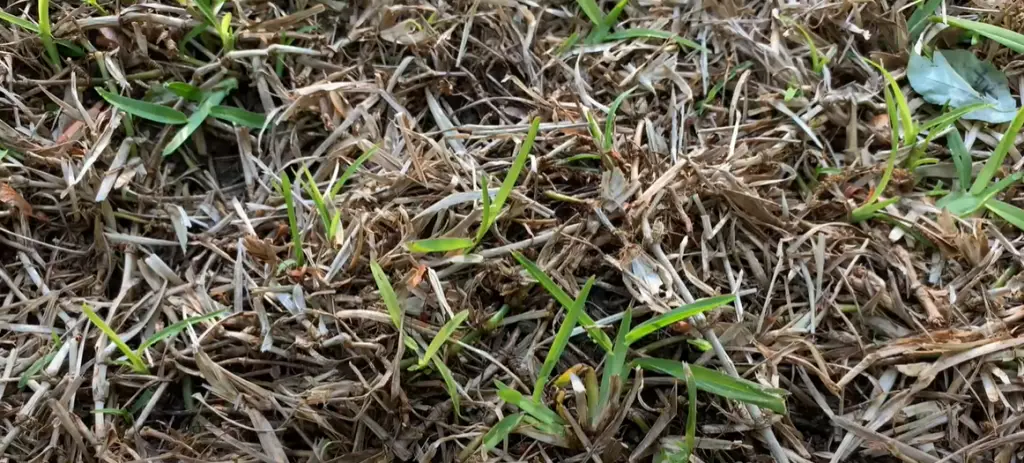
Inadequate Irrigation
Another common culprit behind St. Augustine grass death is inadequate irrigation techniques. This can include inconsistent watering or using a sprinkler system that doesn’t cover the entire lawn. During periods of heavy rainfall, it’s important to make sure areas in your yard are getting enough water and not just relying on rain alone. St. Augustine grass also needs at least 1 inch of water per week during hot summer months to stay healthy and green. [1]
Disease & Pests
If you don’t take action, St. Augustine grass can die due to several diseases and pests that it is vulnerable to. Common disease-causing organisms include Pythium, Brown Patch, Gray Leaf Spot, and Rust Fungus; while Armyworms, Sod Webworms, Chinch Bugs, and Fire Ants commonly attack and destroy St. Augustine turfgrass. Regularly inspect your lawn for signs of pests or disease and contact a lawn care professional if you suspect an infestation.
Improper Maintenance Practices
St. Augustine grass can die due to neglecting proper maintenance practices. This includes mowing too short, over-saturating the lawn with water, and not aeration or dethatching regularly. Additionally, it’s important to keep your mower blades sharp so they don’t tear the grass blades instead of cutting them which can weaken your turfgrass and cause damage. Following proper maintenance protocols will help prevent St. Augustine death due to unnatural causes.
Low Quality of Soil
St. Augustine grass may die due to poor soil quality. If your soil is full of clay or has a low pH level it will be unable to provide your turfgrass with the nutrients it needs to remain healthy and vibrant. The best way to improve soil quality is by applying organic matter such as compost or manure and amending the soil with sand and peat moss. Additionally, you may want to consider taking a soil sample and getting a professional opinion on how best to amend it for optimal health of your lawn.
By following these tips, you can help ensure that your St. Augustine grass remains healthy and vibrant for years to come! With proper care, this type of turfgrass can be an attractive addition to your yard. Keep in mind that while St. Augustine grass is relatively low maintenance, it still requires regular attention and care to remain healthy and happy! [2]
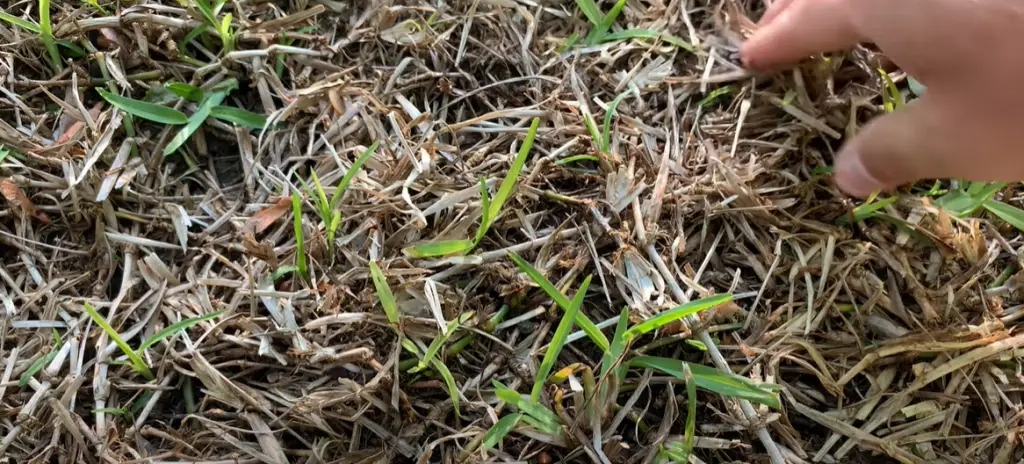
How To Revive St Augustine Grass?
Keep Your Grass Safe
- Ensure that you provide sufficient water and fertilizer to your lawn all year round.During the growing season, it is recommended to water St Augustine grass with at least 1 inch of water per week. During the dormant season, the grass should be watered with 3/4 to 1 inch of water. Fertilizing should be done with a slow-release fertilizer approximately every 6 weeks in spring and summer, and twice a year in fall and winter.
- Monitor for disease or insects that may be affecting your grass’s health. Common issues include take-all root rot, gray leaf spot, chinch bugs, sod webworms, armyworms, and grub worms. If you notice any signs of damage or infestation such as yellow patches or damaged leaves, consult a professional to identify the problem and suggest a solution.
- Mow your lawn regularly to keep it healthy. The proper
mowing height for St Augustine grass is 2″-4″ tall, cutting no more than one-third of the blade off at a time.
- Replant spots in your yard with new St Augustine sod or plugs if needed. If you have large patches that are balding or have brown sprigs, replacing them with fresh growth will help revive the area quickly and give your lawn a lush look once again.
- Aerate your lawn annually to improve soil quality and water infiltration. This helps break up any compaction from heavy foot traffic or mowing and lets air, water, and nutrients penetrate deep into the soil.
- Remove thatch if necessary. Thatch is the layer of dead and living stems, roots, and other organic matter that builds up between the soil and grass blades in your lawn over time. Removing it will help improve air circulation, water infiltration, and nutrient uptake for a healthier lawn.
- Consider overseeding with a hardy variety of St Augustine grass to thicken thinning areas or fill in bald spots without having to replace them. Overseeding will also help reduce weeds from invading bare patches on your lawn.
Following these tips can help you revive your St Augustine Grass when it’s looking a bit worse for wear and restore its lush green hue to its former glory! With regular maintenance and proper care, you can enjoy a beautiful St Augustine grass lawn all season long. [3]

Mowing Should Be Done With Care
When it comes to St. Augustine grass, mowing is one of the most important tasks you can do for your lawn’s health and longevity. You should set the mower blades high, never cutting more than one-third of the grass blade at a time. This helps ensure that you don’t cut off too much of the top growth, which can cause weak turf and overgrowth that leads to disease and other problems.
Finally, be aware if there are areas where water tends to pool after heavy rain; this could increase the chance for fungus and disease. If this is the case, you’ll need to aerate more often so water can drain properly and allow air to get down into the soil.
St. Augustine grass needs proper maintenance in order to keep it healthy and growing strong; mowing is no exception. With regular sharpening of blades, mowing at the correct height, and focusing on areas where water pools after rain, you can ensure that your St. Augustine lawn will remain lush for years to come! [4]
Remove Weeds Regularly
Regular weed control is an important task to prevent St. Augustine grass from dying. Weeds compete with the grass for water, nutrients and light, so they need to be removed regularly in order to keep St. Augustine healthy. Hand weeding is a good option as it targets weeds without damaging the surrounding turf.
Also, using some type of pre-emergent herbicide can help to prevent weed seeds from germinating in the first place. In addition, post-emergent herbicides can be used on existing weeds if needed.
Lastly, mulching around trees and bushes helps reduce weed growth. With regular maintenance, your St Augustine grass will remain healthy and lush for years to come!
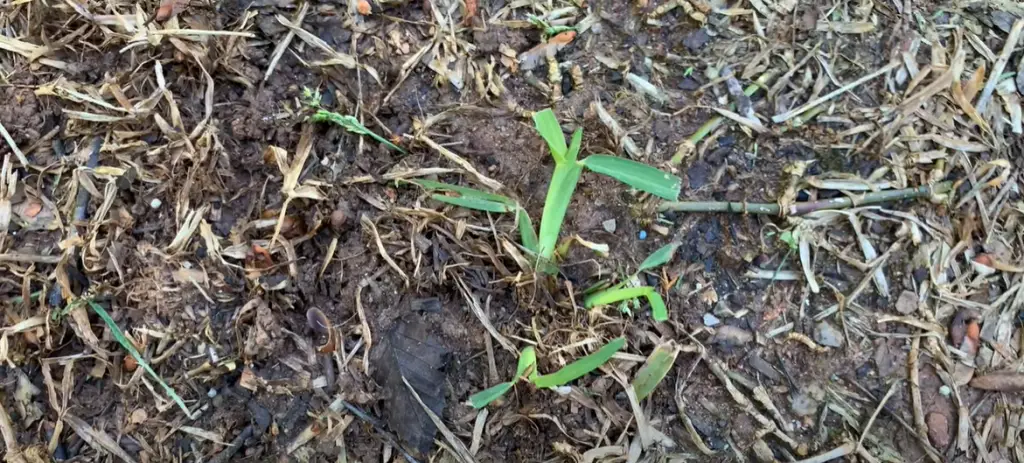
St. Augustine Grass: How to Replant It?
Replanting St. Augustine grass is a process that requires careful planning and attention to detail in order to ensure success. First, you must determine how much area needs to be replanted and then prepare the space by removing all existing vegetation. This means pulling weeds, roots, and even rocks if necessary. You will want to loosen the soil before laying the new sod or plugs so that water can penetrate more easily and ensure a deeper root system for your grass. When purchasing your St. Augustine grass, make sure it is appropriate for your climate zone and verify that it has been tested for disease resistance.
To plant St. Augustine grass from sod, roll it out across the desired area in tight rows or sections making sure there are no gaps between them. If you are planting plugs, space them about 12-18 inches apart and press firmly into the soil making sure that there is good contact between the plug and the surrounding soil. Water your new grass thoroughly after planting and for the first few weeks until it has had a chance to become established.
Finally, once your St. Augustine grass has been planted properly, it is important to provide it with adequate nutrient supply in order to keep it healthy and vibrant. This can be done through periodic fertilizer applications as well as using mulch or compost to help retain moisture in the soil. With proper care and maintenance St. Augustine grass should thrive and remain beautiful year-round! [5]
Can Dead St Augustine Grass Come Back?
It is possible for dead St. Augustine grass to come back, but it depends on the extent of the damage and what caused it in the first place. If the lawn has been damaged by insects, disease, or drought conditions, and there are still some healthy areas remaining, then you can often revive the grass with proper care and maintenance.
This includes watering deeply once a week during dry spells, fertilizing regularly to encourage regrowth, aerating compacted soil to improve drainage and air flow, and removing dead patches of grass so they don’t spread further. It is also important to keep weeds from taking over your lawn because they can choke out any new growth from your existing turfgrass.
Finally, you may need to apply a quality seed blend to help your lawn recover and fill in any bare patches. Be sure to choose a variety that is compatible with St. Augustine grass and follow the instructions on the package carefully. With some patience and dedication, you should be able to bring your St. Augustine grass back from the brink of death!
Ultimately, it’s always best to take preventive measures before your grass reaches this point by following proper lawn care guidelines like fertilizing regularly, mowing correctly, and watering deeply during dry spells. Taking these steps can help ensure that you don’t have to worry about bringing dead St. Augustine grass back in the future.
Benefits and Disadvantages of St. Augustine Grass
St. Augustine grass is a popular choice for lawns in warm, moist climates. It’s known for its thick turf that tolerates shade and heavy traffic. The grass also has low water requirements and needs less fertilizer than other varieties of grass. However, there are some disadvantages to having St. Augustine grass as well.
St. Augustine grass can be susceptible to certain diseases such as brown patch and gray leaf spot, which thrive in humid climates like the southern US states. Brown patch kills large sections of turf, leaving dead patches with yellow rings around them; while gray leaf spot is caused by a fungus that creates light-brown spots on leaves and stems of your St. Augustine grass that eventually spread and kill the turf.
Another drawback is that St. Augustine grass requires regular mowing in order to keep its desirable shape and density, as it can quickly become overgrown if not maintained properly. It also tends to be more expensive than other turfgrass varieties due to its popularity.
Overall, St. Augustine grass can make a beautiful addition to your yard when it’s properly cared for and maintained – but make sure you understand what is involved before making your decision about which type of grass to use. With proper attention and maintenance, however, this beautiful turfgrass can provide you with a lush, healthy lawn that will have your neighbors green with envy.
So if you’re considering St. Augustine grass for your yard, be sure to take into account all of the benefits and disadvantages of this popular turfgrass variety. With just a bit of extra care and attention you can have a thriving lawn that will last for years to come! [6]

FAQ
What kills St. Augustine grass?
St. Augustine grass is susceptible to a wide variety of problems, including damage from pests and diseases, improper care and maintenance, inadequate irrigation, and extreme weather conditions. Common culprits include fungal diseases such as brown patch or gray leaf spot; insects such as armyworms and chinch bugs; nutrient deficiency; drought stress; over-fertilization; excessive thatch buildup; compaction due to heavy foot traffic; cold temperatures during the winter months in northern climates; and pet urine spots.
What should I do if my St. Augustine grass is dying?
If your St. Augustine grass is showing signs of decline or death, the first step is to identify what’s causing it by assessing the surrounding environment and any potential sources of damage. Inspect your grass for signs of insect infestations or fungal diseases, which can often be treated with products available at garden centers or by calling in a professional lawn care specialist. If the problem is due to environmental factors, such as drought stress or compaction, then you’ll need to implement steps to remedy these issues. This may involve watering more frequently and deeply in times of drought, aerating the soil to reduce compaction, or adjusting irrigation patterns and fertilization schedules.
Can I save my St. Augustine grass if it’s already dead?
In some cases, it is possible to revive a patch of dead St. Augustine grass through reseeding or repairing damaged areas with plugs or sod pieces from another part of the lawn. However, if the problem is due to an ongoing environmental issue, such as drought stress or soil compaction, then you’ll need to address these issues first in order to have any chance of restoring your grass. It’s also important to take preventive steps against future damage by regularly inspecting your lawn for signs of insect infestations or fungal diseases, maintaining proper irrigation and fertilization schedules, reducing thatch buildup, and aerating the soil when needed.
Can I plant something else on top of my dead St. Augustine grass?
Yes, you can plant other types of grasses over a patch of dead St. Augustine grass as long as you prepare the soil properly beforehand. Start by tilling up the area and removing any dead grass and debris. Next, add a layer of nutrient-rich soil before planting the new grass seed according to the instructions on the package. It’s also important to keep in mind that different species of turfgrass have varying requirements for sun, water, and nutrients, so make sure you select a variety that is suitable for your climate and lawn care needs.
What types of grass can I plant instead of St. Augustine?
There are many different types of turfgrasses available for use in home lawns, including tall fescue, bermudagrass, zoysiagrass, and Kentucky bluegrass. Each type has its own set of characteristics and benefits that may or may not be compatible with your climate, soil type, and lawn care needs. It’s important to do some research first and consult with a professional landscaper or lawn care specialist before deciding which variety is best for you.
Can I overseed my St. Augustine grass?
Yes, it is possible to overseed a patch of St. Augustine grass in order to thicken up bare spots or improve density in areas with thinning turf. Before doing this, however, it’s important to identify the cause of any existing damage (such as fungal diseases or insect infestations) and address these issues accordingly. Additionally, make sure you select a seed variety that is compatible with your particular climate and soil conditions so that the new grass has the best chance of thriving. Overall, St. Augustine grass can be a great choice for homeowners looking to create a beautiful and low-maintenance lawn.
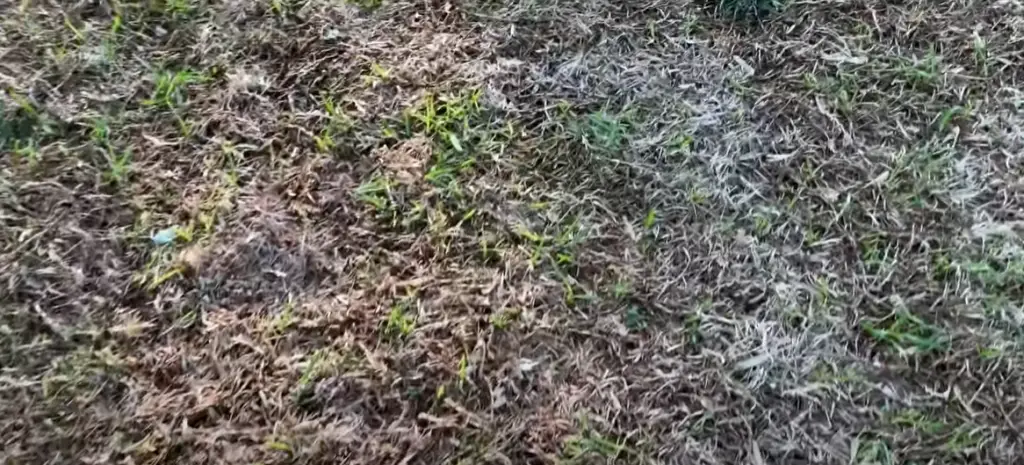
Why is my St. Augustine grass turning brown?
There can be several causes for St. Augustine grass turning brown, including lack of water, disease, soil nutrient deficiencies, improper mowing and/or fertilization, over-saturation from heavy rains or flooding, extreme temperatures and drought. Additionally, certain insects such as chinch bugs may feed on the grass blades causing damage to the lawn.In order to diagnose and treat your St. Augustine grass correctly, it is important to identify which issue is causing the browning of the turf. To start this process you should inspect your lawn closely for signs of insect activity or damage caused by environmental factors such as too much shade or water saturation. If there are no obvious signs of these issues then a soil test should be conducted in order to determine if there are any nutrient deficiencies that may be causing the browning of your grass.
Will St. Augustine recover from the brown patch?
If the cause of brown patches is due to a lack of water and/or nutrient deficiencies, then yes, St. Augustine grass will recover with proper care. To help your lawn recover from these issues it is important to make sure you are providing the grass with adequate water, mowing at the appropriate height, fertilizing appropriately and avoiding over-saturation from heavy rains or flooding. If the cause of the brown patch is due to disease or insects then corrective measures may need to be taken in order for your lawn to fully recover. This can include using fungicides and insecticides respectively. It is also important to consider environmental factors such as shade levels when diagnosing problems with St. Augustine grass. Too much shade can prevent sunlight from reaching the grass, leading to brown patches.
Useful Video: Brown and Dead St Augustine Grass – Causes \\ St Augustine Tips
Conclusion
In conclusion, there are many reasons why St. Augustine grass may be dying, from lack of proper care and maintenance to insect infestation to disease or even just natural processes. It can be difficult to determine the exact cause of the issue without further investigation by a lawn specialist. By following best practices for watering, fertilizing, mowing, and pesticide/herbicide application as well as taking proactive steps to detect diseases or pests early, you can help your St. Augustine grass stay healthy and vibrant. If all else fails, it might be time to consider replacing your lawn with another type of grass that better suits your needs and climate. With proper maintenance and attention, however, you can ensure that your beautiful St. Augustine grass stays lush and healthy for many years to come.
Good luck!
References:
- https://www.thisoldhouse.com/lawns/reviews/how-to-revive-st-augustine-grass
- https://www.crabgrasslawn.com/revive-st-augustine-grass/
- https://lawnmodel.com/revive-st-augustine-grass-to-grow-back/
- https://www.evergreenseeds.com/how-to-revive-st-augustine-grass
- https://www.angi.com/articles/revive-dead-st-augustine-grass.htm
- https://homeguides.sfgate.com/st-augustine-grass-dying-certain-spots-97430.html

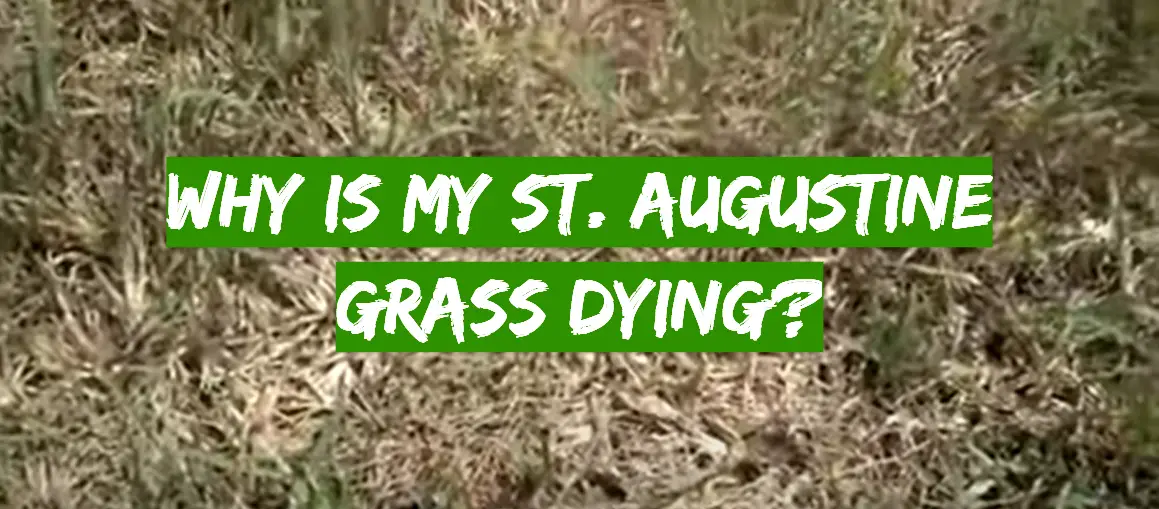


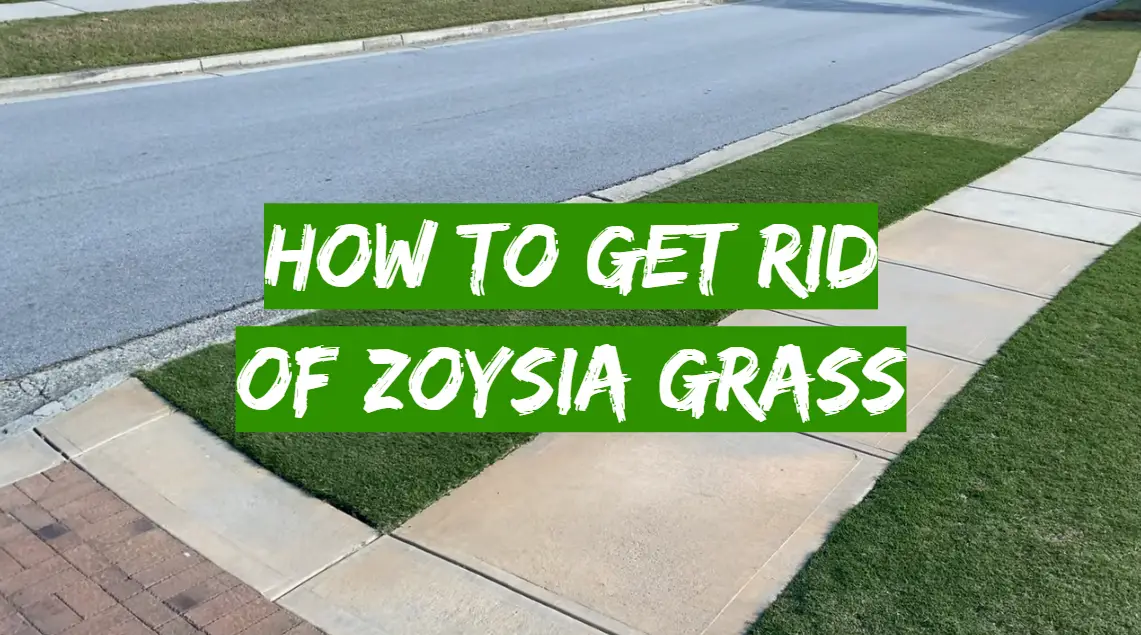
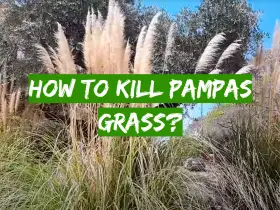

Leave a Reply
View Comments